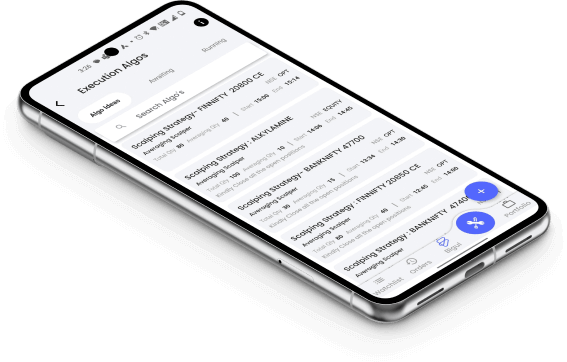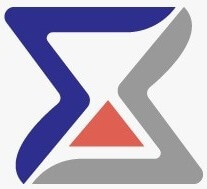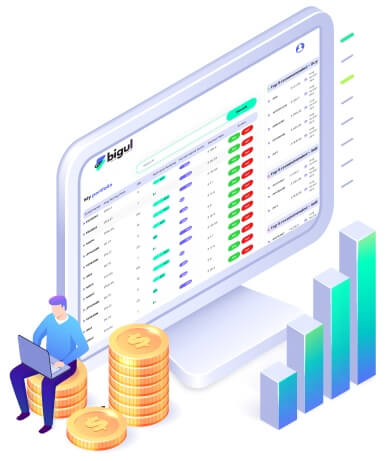Open an Account & Start Algo Trading Today!
- Flat Rs 18 brokerage
- No Cost Algo Trading
- Trade from Chart
- 30+ Indicators
- Stock SIP
- Smart Case
- Bigul Option Chain
- 300+ Pre Defined Market Watch
- IPOs
- Basket Order
Best Time Frame for Intraday Trading
When you look at the price chart of a stock, you often find periods when
you could have closed the operations with the highest profit. If only one could
foresee one more movement and act before it happens and not after it is already
done.
Most traders new to this could lose sleepless nights trying to solve
this puzzle. They would look into technical indicators and practice charting
techniques so they could be the first ones to notice the next breakout.
The professional trader is aware that over-analyzing an asset’s price is
futile, and hence, the goal is to prepare for the trade’s entry and wait for
the appropriate market condition to reduce the potential risks. They would also
appreciate that considering trading several assets within various analysis periods
completely changes the picture.
The difference between viewing an asset, firstly within a period of 1
minute and secondly within that of 1 week, is dramatic and changes the economic
sense of the matter by getting the best soc's rendering that fits one’s trading
plan.
In this article, we explore what the trading time frames are, and match each of them with dominant short-term trading strategies that they best complement.
What Is an Intraday Trading Time Frame?
Time frames affect the frequency of your trades, thus it is important to
adopt one that is in line with your expectations and trader profile. In other
words, you must first identify what kind of trader you are going to be and only
then determine the proper time frame to use for the analysis. Day traders and
long-term investors will not have the same time frames because they look at
different trends & trades.
Time frames can, in general, either range from several minutes to
several hours, days, weeks, months, or even up to several years. If the time frame
is less than or equal to 1 hour, you can expect to see more signals for trades
being opened. This is however not always a good thing because more often than
not, a lot of this data becomes noise which is hard to refine through and at
most times inhibits sound decisions when trading.
So, it is possible to go through time frames on the chart like this one
that depicts candles. The time units in which a candle is built change based on
the time frame settings done by the trader.
Consistent with the day trading definition which is one of the intraday trading kinds that deals with short term price movements usually taking place within a few minutes to a few hours, it almost always uses very short time frames most of which are 15 minute or 5-minute charts.
What Is the Best Time Frame for Intraday Trading?
Day traders tend to focus on smaller price changes that can be completed
within the timeframe and limits of one trading session. They can afford to
sustain their trades for only a few hours, but it is not a must. Most day
traders employ margin trading techniques, and for day traders, this is usually
a choice between the different time frames.
There are objectives in day trading that strive to capture minute price
movements within intervals that last for minutes, hours, or a day, regardless
of whether the open position is held until the end of a trading day. That is
why not necessarily education, but mainly a practice in day trading, aims at
fueling investors via proper time frame sense. Examples of regularly used
timeframes when trading such strategies intraday are charts with time intervals
of 1, 5, 15, 30, and 60 minutes.
It is really important to make sure that the selected trading frame
corresponds to your profile and strategy. Therefore, it is highly recommended
that you practice on a demo account at different time intervals before making
actual trades.
For example, scalpers targeting profits of a few points will typically trade with 1-minute or 5 minute charts. They avoid making one big win in a day after several hours of trading and instead prefer to make a number of smaller wins over many trades throughout the day. This is also the reason as to why they normally have a small stop loss so that they can protect themselves but act fast and cut their winning trades.
Should You Trade in the First Half or the Second Half?
The saying that trading in the first half is better than in the second
half as an intraday trading period is a myth. Depending upon your stock
analysis, you can trade at any time during the market hours.
There are some of the things you must know about the first or second
half of intraday trading are that the initial half of the day (from opening
bell and then to noon) has more active trading, and a wider price range is
encountered as the time when the market simply absorbs the opening
news/information and the first round of trades is carried out. This may provide
more chances for traders.
There is a spike in the movement of the intraday stocks in the early
morning. This gap up or gap down is a breakout and can profit a lot of traders.
In the afternoon, movement can be seen to be at a very slow rate. At this
moment, the volatility may be high or low. Just before trading sessions close,
the failure of the trend to persist is often followed by a resurgence &
broadening of the trend. However, as opposed to that, the behaviour of the
market is subject to many conditions.
As of now, let us examine the situations with the help of which we can trade in different time frames:
15-Minute chart
Scalpers would take advantage of the 15 minutes time
frame as they execute several positions within a single day. Since they have a
wider watchlist, such traders normally would take a somewhat longer time frame
to assist them in scanning and studying price targets in the best possible way.
In this case, a shorter time frame would contain a lot of ‘noise’ and therefore
make it more difficult for a trader to clean up the entry points.
A 15-minute chart is, notwithstanding, very optimal
for a notable category of day traders who sweep through intraday charts. In
this time period, traders have a good understanding of both support and
resistance levels and do not miss out on good opportunities as far as making
money from fluctuations in the price is concerned.
As indicated previously, trading within the 15-minute time frame is one of the popular day trading strategies.
5-Minute chart
The chart provides scope to the day trader to trade on
price reversal formations and hold out for the new trend to develop. This strategy
is often used by traders who are interested in making fast changes in their
open positions.
Such an investment approach is applied by setting a few trades a day with the heavy use of both 15-minute and 5-minute charts. There is really no advantage in using one over the other; it depends mainly on one’s trading strategy.
1-Minute Time Frame Trading
They are mainly intended for skilled scalpers only.
Scalping explained previously is a trading technique that seeks to make many
small profits on price changes.
This particular time frame calls for a deep
comprehension of the market structure and sound trading discipline. Scalping
with 1-minute charts involves a comprehensive export plan and abundant
information.
This time frame is very intense as in every minute new
candlesticks appear and any time a new trade signal could come in. As new
candles/bars come in frequently, it is also very clear that 1 minute chart
traders make use of more transactions relative to 5 minute or 15 minute chart
traders.
Understanding that this situation does not last for long, the traders whose time frame is 1-minute candles.
Types of Intraday Trading Charts
Intraday trading charts represent the movements in prices and the
relevant changes in conditions of instruments in one trading day graphically.
These charts are very important for traders when analyzing price fluctuations
that occur in a short duration. There are several popular types of intraday
trading charts. Here are some of the most common:
- Line
Chart: This chart connects the closing prices of a stock
over a specific time frame, forming a line. It’s simple and useful for
observing long-term trends.
- Candlestick
Chart: One of the most popular charts, it provides
detailed information, including the opening, closing, high, and low prices
for each time period. Each candlestick represents a specific time frame
and helps identify market trends and potential reversals.
- Bar
Chart: Similar to candlestick charts, bar charts display the opening,
closing, high, and low prices. The vertical line represents the price
range, while the horizontal lines on the left and right indicate the
opening and closing prices.
- Renko
Chart: Such a chart consists of no time element, focusing only on the
price movement in the chart. This uses bricks, which are moves in price
that an amount exceeds, in order to remove those little price moves and
show those that matter.
- Volume
Chart: This chart shows the trading volume for a
specific time period, helping traders understand the strength of a price
movement.
- Point and
Figure Chart: This chart plots price changes without
considering time. It uses Xs and Os to represent price increases and
decreases, respectively, and is useful for identifying support and
resistance levels.
- Tick Chart: This chart plots price changes based on a specified number of transactions, rather than time. It’s useful for high-frequency traders who need to analyze market activity in real time.
Conclusion
The most effective time frame for one day of trade will depend on what
type of trader one wishes to be. For example, those retail investors who
generally want to make lesser profits per trade and perform several trades in a
day will most of the time go for a five-minute or a fifteen-minute time frame.
A day trader is oriented to perform a single trade in a particular
session and aims to minimize the risks involved relative to using a
thirty-minute or one-hour time chart. Experienced day traders would want to use
multiple time frames mainly to confirm the signals for the trade and the
trading levels.
In this case, the concept of a time frame is somewhat personalized for every trader. In this case, what the traders would advise is that after picking the main time horizon to be adopted, other time frames should be picked, too.
FAQs
1. What’s
the best time frame for quick trades?
For quick trades, a 1-minute or 5-minute chart is
ideal. These time frames allow traders to react swiftly to price changes and
execute trades quickly, capturing small price movements.
2. How
does a 15-minute time frame benefit intraday
traders?
A 15-minute time frame balances between short-term
noise and trend visibility. It helps traders spot trends while reducing the
randomness seen in very short time frames like the 1-minute chart.
3. Is
a 30-minute chart useful for intraday trading?
Yes, a 30-minute chart is useful for identifying
broader trends and setting up trades based on more stable price patterns. It
provides a clearer view of market direction while still being suitable for
intraday decisions.
4. Can
using multiple time frames improve trading
decisions?
Absolutely. Combining different time frames, such as using a 5-minute chart for entry signals and a 15-minute or 30-minute chart for trend confirmation, can help traders make more informed decisions and reduce risk.
Also Read:

Download Bigul Trading App!
Supercharge your trading on the go with the Bigul Trading App! Download now for instant access to cutting-edge features, real-time insights, and unparalleled convenience.













